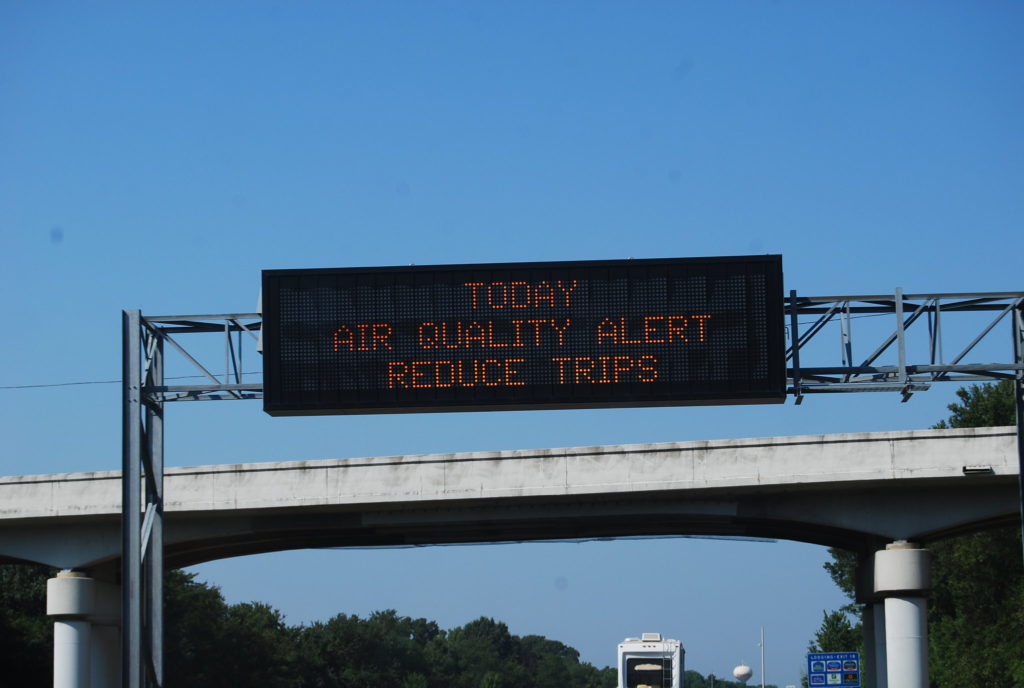
Summertime is often the worst time for air quality. When temperatures climb, air becomes stagnant and pollution levels rise.
The Tennessee Department of Environment and Conservation has issued three air quality alerts for elevated ozone pollution this week during an especially hot heat wave. Nashville just hit 100 degrees Wednesday for the first time in a decade.
“Currently, across all of Tennessee, we’re experiencing moderate to high ozone values,” said Michelle Oakes, of TDEC’s Division of Air Pollution Control.
Ozone pollution, also called ground-level ozone, forms when heat and sunlight trigger a reaction between nitrogen oxide and volatile organic compounds, which come from cars, industry and fossil fuel activities.
On Wednesday, Nashville and other areas were under an “orange” air quality alert that warns sensitive groups, like young children, the elderly, pregnant people and people with asthma or heart conditions, from spending much time outdoors. But this advice is sound for the general public, too.
The alerts are designed to make people aware “so they can make their own decisions on whether they should exercise outside or indoors, or whether they should plan their activities at a different time of day,” Oakes said, such as avoiding going outside during the peak ozone hours of mid to late afternoon.
The U.S. Air Quality Index was created by the Environmental Protection Agency. It represents a uniform way of quantifying air pollution risks, and it is color-coded into six categories: green is good, yellow is moderate, orange is unhealthy for sensitive groups, red is unhealthy, purple is very unhealthy and maroon is hazardous.
EPA determines the AQI values based on the limits it sets for five pollutants, including ground-level ozone, particle pollution, carbon monoxide, sulfur dioxide and nitrogen dioxide.
These limits are called the National Ambient Air Quality Standards, which the Clean Air Act mandates are set using the “latest scientific knowledge” – but the standards change depending on who is in the White House and which industries are influencing policies.
During the Trump administration, for example, then acting EPA chief Andrew Wheeler fired the review panel of scientific experts tasked with reviewing NAAQS. He gave more power to the Clean Air Scientific Advisory Committee, which has appointed members.
Since then, EPA administrator Michael Regan has fired the scientific advisors installed under the Trump administration.
In February, the new committee released a draft report saying that EPA’s air quality standard for soot pollution was not protective of public health. This came after the Trump administration rejected changes in 2020, despite agency findings linking exposure to soot pollution to at least 52,100 premature deaths.
The EPA is also examining its ozone standard. Earlier this month, an EPA advisory panel decided to reevaluate the EPA’s recent conclusion that the agency did not need to tighten the 70-parts-per-billion limit for ozone pollution.
It is unclear what will happen, but health experts hope the EPA will instead enact stronger regulations.
For more information on the Air Quality Index and air quality alerts, visit airnow.gov.

